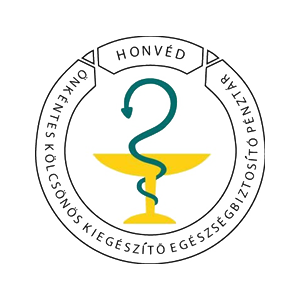Development of medicine brought further specialization of urology (urologic oncology, reconstructive urology, stone removal surgery) and a further separate branch is the andrology that addresses men's health issues.
Contrary to popular belief, urology is not restricted to the therapy of men's problems. Rate of female urological patients is almost as high as that of males. Urology is one of the disciplines showing the greatest progress due to the development of technology. Open surgeries performed under general anaesthesia has been replaced by endoscopic interventions and surgeries. These involve less pain, faster recovery, less hospitalization time and better quality of life.

When to seek an urologist?
Most urological conditions require early diagnosis. Therefore, in addition to regular screenings, you should visit an urologist even when the first symptoms appear so that the problem is addressed before it progresses. For palpable lesions, such as enlarged testicles or other manifested symptoms including blood in urine, pain or disorders of urination treatment is usually more difficult and prolonged process.
In general, most urogenital problems are very complex and multiple and usually accompanied by variable symptoms and conditions. Thus, different types of tests and examinations may be needed for the diagnosis. Some problems are easier to identify (visible and/or palpable lesions, blood in urine, urination disorders), while a "simple" pain in the abdomen or lower back may suggest problems outside the urogenital system. For example, frequent, abundant urination at night may either refer to prostate disorders or cardiac problems.
Which symptoms require urological consultation?
Blood in urine (haematuria)
When blood is present in your urine you should visit an urologist as soon as possible. Possible causes include urine stones, severe inflammation or even cancer. Usually, the underlying problem can be identified with physical examination, lab tests and imaging diagnostics (mainly with medical ultrasound, sometimes computed tomography). In given cases, endoscopy of urinary bladder or upper urinary tract may be necessary.
Difficulties of urination
This problem typically affects men, usually caused by benign enlargement of prostate or, in rare cases, urethral stricture. Here physical examination should be completed with laboratory tests and ultrasonography.
Frequent urination
Frequent urination is one of the most common and typical symptoms of lower urinary infections, usually accompanied by an unpleasant, burning sensation. Nevertheless, many different conditions may be present, such as insufficient emptying of the bladder, urinary stones, bladder tumours, overactive bladder syndrome. In these cases, physical examination, laboratory tests and diagnostic imaging methods (ultrasound, CT) are needed, sometimes together with an endoscopic evaluation.
Painful urination
It is generally induced by urinary infections. Also physical check, laboratory tests and ultrasonography are necessary. Mostly, it is about the infection of the urethra or the bladder. Underlying pathogenic bacteria can be easily identified with bacterial culture.
Lower back pain
Contrary to general belief, not only spine column problems and related musculoskeletal disorders can lead to lower back pain but also the pain from urinary and/or reproductive system often irradiates into this region. Usually, these symptoms are induced by urinary stones situated the kidneys or ureters. It involves strong renal colic which is unilateral, fluctuates in intensity and independent of position of the body. What's more, it may affect the lower abdomen, inguinal and/or genital regions.
Swelling of testicles
Patients with palpable lumps, swelling on scrotum or testicles must see an urologist without delay. First, testicular tumours should be excluded, otherwise the affected organ must be removed and necessary therapies should be started immediately. Of course, palpable testicular lesions may also suggest other problems, including hydrocele, varicose testicular vein or cyst of the epididymis. Overall swelling of the whole testicle generally suggests inflammation process of the testicle or epididymis. Sometimes it may be provoked by testicular torsion, typically with sudden, strong, one-sided pain. In this latter case, immediate urological consultation is needed, while the risk of testicular necrosis increases with every hour.
What to expect at a urological consultation?
If you experience one or more of the above complaints or similar to those, report them to the urologist first. You will be enquired about your medical history (previous diseases, surgeries, medications taken and allergies, if any). Then the specialist carries out the physical examination, including a visual check and palpation of the abdomen, lower abdomen and/or the external genital organs. The only examination that may really cause discomfort, although it is not painful, is the palpation of the prostate which is performed through the rectum, following a careful preparation.
For further analyses, ultrasound is widely used in urology, allowing thorough assessment of the scrotum, prostate, bladder or even kidneys. If you have a bladder problem, please make sure that your bladder is full at the time of the ultrasound examination; otherwise the analysis may be unsuccessful.

Following the physical examination and ultrasound scan, the specialist may suggest additional examinations, such as:
- blood test and urine analysis. Please note that no starving is necessary before the blood test. It is neither required to collect first urine in the morning. In female patients, urine is sometimes collected through a catheter to avoid contamination from the surrounding areas, e.g. the vagina. Introduction of the catheter is fast, painless and causes only mild discomfort.
- screening for prostate cancer. Development of a malignant prostatic tumour is an increasingly common problem among elder male patients but persons of younger age groups may also be affected. If diagnosed and treated in time, it has a very good prognosis. For this reason, regular screening is indispensable, involving either a comprehensive examination of the genitals or only that of the prostate. In addition to the physical evaluation of the prostate (palpation through the rectum), a specific blood parameter, the so called PSA (prostate specific antigen) is checked, too. Combining these two methods, it is possible to diagnose or exclude prostate cancer with a great certainty, the screening of which should be done regularly in men over 50.














